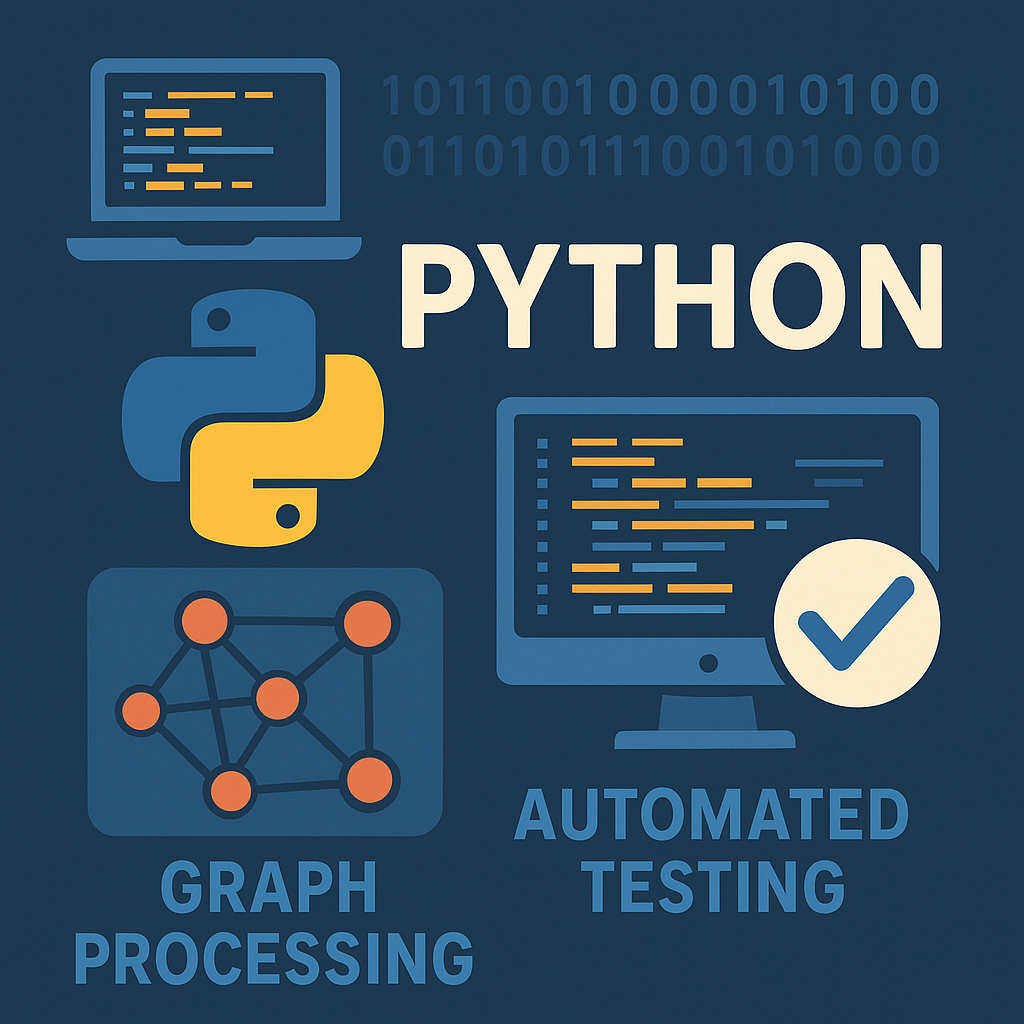In the evolving landscape of data-driven development and automated testing, 418dsg7 Python has carved a niche as a high-performance tool built for tackling complex graph processing and ensuring rigorous software testing. Whether you’re working with large-scale social networks, designing neural networks, or running regression tests for SaaS applications, 418dsg7 Python stands out with its robust architecture, optimised algorithms, and seamless integration capabilities.
In this comprehensive guide, we’ll explore what makes 418dsg7 Python unique, its core features and applications, and why it’s gaining popularity in both academia and industry.
What is 418dsg7 Python?
418dsg7 Python is a cutting-edge Python framework designed to streamline two core domains: advanced graph data processing and automated software testing. Developed to support performance-heavy tasks and integrated workflows, this library merges analytics, data management, and quality assurance into one robust solution.
From its efficient graph traversal mechanisms to its intelligent automation tools, 418dsg7 Python helps developers save time, eliminate redundancy, and boost productivity.
Key Features
Advanced Graph Processing Engine
Graphs are essential in modelling relationships, be it for social networks, recommendation systems, or supply chain logistics. 418dsg7 Python introduces a highly optimised graph engine that supports:
Hierarchical graph structures
Parallel processing for massive datasets
Dynamic updates and deletions
In-memory and persistent storage options
The library uses optimised traversal algorithms like DFS, BFS, and shortest-path algorithms with parallelism to reduce latency during execution.
Efficient Data Management
Large-scale graph datasets often face bottlenecks due to inefficient storage and retrieval systems. 418dsg7 Python addresses this through:
Data compression and pruning techniques
In-built caching strategies
Real-time graph validation
Support for JSON, CSV, and custom binary data formats
These features ensure that even under stress, your application maintains high responsiveness and consistency.
Automated Testing Support with DowsStrike2045 Integration
The framework incorporates DowsStrike2045, a robust testing framework that aligns perfectly with 418dsg7 Python’s mission to simplify quality assurance. It supports:
Unit testing
Regression testing
Test coverage tracking
Dynamic test case generation
The fusion of testing and development in a single ecosystem means fewer bugs, faster releases, and better maintainability.
Seamless Integration with Development Pipelines
One of the standout aspects of 418dsg7 Python is its plug-and-play integration capabilities. Whether you’re using Jenkins, GitHub Actions, or a custom CI/CD pipeline, the framework supports smooth transitions from code to deployment. Key highlights include:
Pythonic syntax for intuitive coding
Modular APIs
REST and Graphql compatibility
Dockerized deployment support
Its adaptability makes it a favourite among developers looking to automate repetitive tasks and improve deployment cycles.
Real-TimeVisualisationn & Monitoring
Graph structures aren’t just computational entities—they also offer insight when visualised correctly. 418dsg7 Python includes tools for real-time graph rendering using popular libraries like:
Plotly
Matplotlib
NetworkX (with enhancements)
This allows developers to visually debug relationships, monitor node behaviour, and optimise data flows interactively.
Use Cases of 418dsg7 Python
Social Network Analysis
Understand influence patterns, detect communities, and analyse reach with the framework’s robust graph analysis tools.
AI & Neural Network Mapping
Visualise neural structures, connections, and activation paths—418dsg7 Python integrates well with AI pipelines.
Automated Regression Testing for SaaS
Detect software anomalies early by integrating testing modules with development pipelines using 418dsg7 Python’s DowsStrike2045 interface.
Supply Chain & Logistics Optimisation
Track dependencies, forecast delays, and model alternatives using real-time graph updates and data feeds.
Why Developers Choose 418dsg7 Python
✅ High Scalability
Built to handle millions of nodes and edges, 418dsg7 Python scales effortlessly in enterprise settings.
✅ Open-Source Friendly
It plays nicely with other tools in the Python ecosystem, encouraging collaborative development.
✅ Security & Compliance
Integrated security checks ensure that data and test results are safe and GDPR-compliant.
✅ Ease of Use
From intuitive function calls to prebuilt templates, the framework is beginner-friendly yet robust for advanced use cases.
Getting Started with 418dsg7 Python
Installation:
bash
CopyEdit
pip install 418dsg7
Basic Graph Creation:
Python
CopyEdit
from dsg7.graph import Graph
g = Graph()
g.add_node(“A”)
g. g.add_edge(“A”, “B”)
g.display()
Automated Test Example:
Python
CopyEdit
from dsg7.testing import AutoTest
test = AutoTest()
test.load_cases(“test_config.yaml”)
test.run()
Expert Insights & Community Support
Numerous developers and tech analysts praise 418dsg7 Python for its innovation. In fact, platforms like TechMingle have recommended exploring innovative SEO strategies as part of incorporating intelligent testing and automation with Python-based SaaS tools, where it fits in perfectly.
Comparison with Alternatives
| Feature | 418dsg7 Python | NetworkX | PyTest | Neo4j |
| Graph Processing | ✅ Optimized | ✅ Basic | ❌ | ✅ Advanced |
| Automated Testing | ✅ Built-in | ❌ | ✅ | ❌ |
| CI/CD Integration | ✅ Seamless | ⚠️ Manual | ✅ | ⚠️ API only |
| Visualisation Tools | ✅ Native + Ext | ⚠️ Basic | ❌ | ✅ |
| Best Use Case | All-in-one | Educational | Unit Testing | Graph Databases |
Future of 418dsg7 Python
With increasing reliance on real-time data and quality-focused deployments, the future looks bright. Upcoming updates promise:
Enhanced machine learning model support
Native mobile application compatibility
AI-generated test scripting
Expanded REST API documentation
The development community remains active, with contributors regularly updating the framework on GitHub and releasing educational content.
Final Thoughts
418dsg7 Python is more than just a library; it’s a versatile framework for modern developers navigating the demanding landscapes of data processing and testing. With its efficient architecture, user-friendly design, and future-proof functionalities, it is a must-have tool in your Python toolkit.
Whether you’re building scalable systems, performing critical analytics, or pushing for zero-bug deployments, it empowers you to get there faster, smarter, and with confidence.
